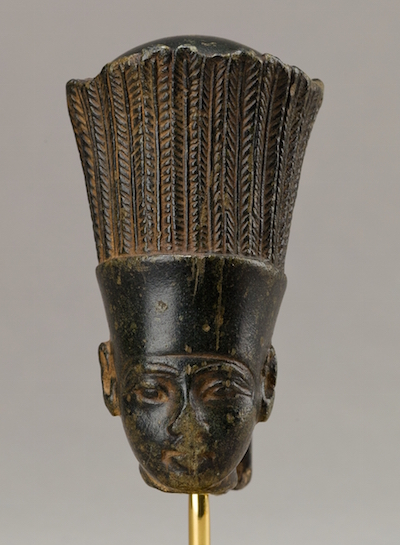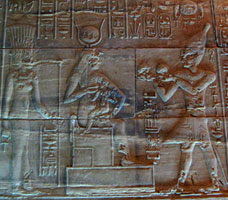
The ancient Egyptian Goddess Anuket (also known as Anket, Anqet, Anjet or Anukis) was a personification of the Nile as “Nourisher of the Fields”. She was also a goddess of the hunt and was worshipped as a protective deity during childbirth.
She was associated with the lower cataracts (near Aswan) and probably originated in Nubia or Sudan. Specifically, she was associated with Setet Island (Sehel island) and Abu (Elephantine) 1st nome of Upper Egypt, and was goddess of everything south of the Egyptian border. She was widely worshipped in Nubia, and given the title “Mistress of Nubia”. In southern Nubia, Khnum merged with the ram-headed Amun, so Anuket and Satet (Satis) in some places also appear as wives of Amun.

She was originally the daughter of Ra, but seems to have been associated with Satet since ancient times. In fact both these goddesses were called the “Eye of Ra” (along with Sekhmet , Bast and Hathor, among others). Similarly, both Anuket and Satet were linked to the Ureas (the royal cobra on the god’s crown). During the New Kingdom she was placed in the Abu triad with Khnum and Satet. These three water deities protected the Nile cataracts and the area the Egyptians believed to be the source of the Nile.

In later times, she was identified with Nephthys at the temple “Per-Mer” due to Satet’s links with the goddess Isis and Khnum’s link with Osiris. Both Satet and Anuket are closely linked to Isis, who took on the attributes of the fertile waters of the Nile, as well as being a form of the star Sirius.
Anuket was generally depicted as a woman wearing a tall headdress made either of reeds or of ostrich feathers, often holding a sceptre and the ankh symbol, but was occasionally shown in the form of a gazelle.

Her name means “embrace” and may have originally referred the embrace of the waters of the inundation. She was also depicted suckling the pharaoh during the New Kingdom, and became a goddess of lust during later periods. In this form, she gained association with cowrie shells, which resemble the vagina. The Festival of Anuket was held when the inundation began. People threw coins, gold, jewelry, and precious gifts into the Nile to please the goddess.
Bibliography
- Bard, Kathryn (2008) An introduction to the Archaeology of Ancient Egypt
- Goodenough, Simon (1997) Egyptian Mythology
- Lesko, Barbara S (1999) The great goddesses of Egypt
- Pinch, Geraldine (2002) Handbook Egyptian Mythology
- Redford Donald B (2002) Ancient Gods Speak
- Watterson, Barbara (1996) Gods of Ancient Egypt
- Wilkinson, Richard H. (2003) The Complete Gods and Goddesses of Ancient Egypt
- Wilkinson, Richard H. (2000) The Complete Temples of Ancient Egypt
Copyright J Hill 2010